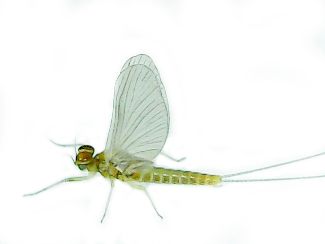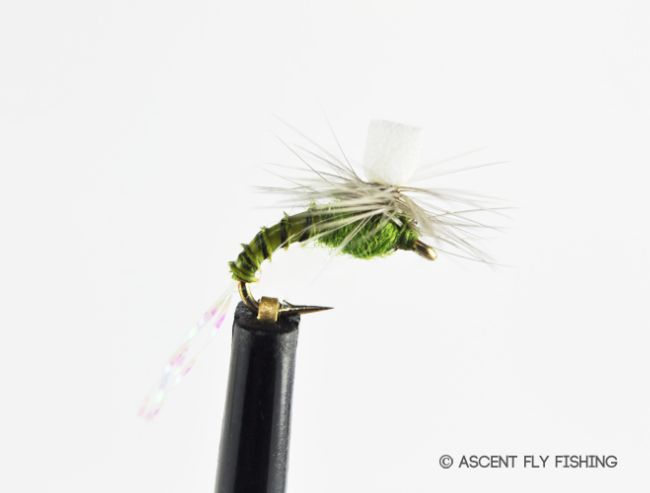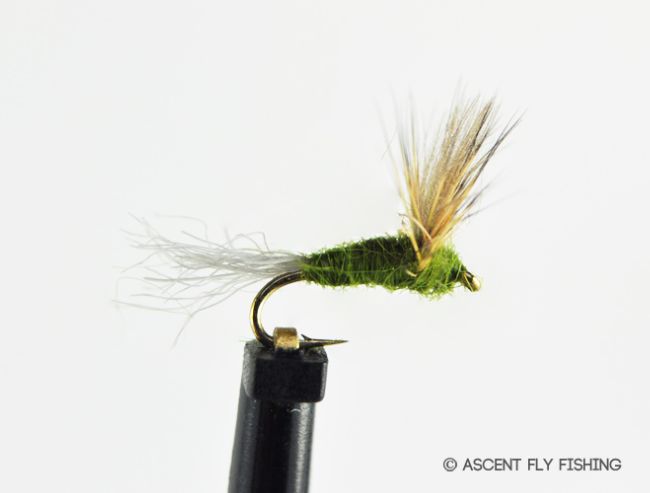
Dialing in the Blue Winged Olive Dun


The Blue Winged Olive is the most prolific of mayflies found in North America and is a staple food on rivers in 48 of the 50 states. While the spring hatch of Blue Winged Olives or BWOs varies in hook size from a size 18-22, what they lack in size they more than make up for with their vast numbers. One of the most productive life cycles for both the fly fisher and the trout is the emerging duns as they struggle to break through and leave the surface of the water.
Triggered by the warming waters in the late winter and early spring, the Blue Winged olive mayfly nymphs push off the bottom of the river in waves and make their way to the surface. Once they hit the surface of the water, cold air temperatures can stop them in their tracks slowing them down enough that they fail to escape from their nymphal skins and die. For the duns that are able to break through the surface of the water and tear out of their nymphal skins, the next task is to stretch their wings out and allow them to dry out enough for the freshly hatched mayfly to take flight and leave the surface of the water.
On cold or overcast days, the duns will struggle to dry out their wings and have to spend an extended amount of time drifting on the surface of the water within reach of eagerly feeding trout.
The mayfly Dun is the first "Dry" life cycle and can be identified with these key characteristics:
- 2 pairs of sail-like wings held perpendicular to the water and back of the insect
- The wings are a smoky grey-blue color
- Muted, dull body color
- 2 short hair-like tails
Here are a few of our favorite BWO Dun patterns that will serve you well for the next 3 months!

BWO Parachute Emerger
Available Sizes: 18-20
The little Blue Winged Olive (BWO) mayfly of the family baetidae are arguably the most important moving-water mayfly hatch for both the trout and the fly angler. Capable of producing two generations per year, the BWO's high level of activity both as a nymph and as an adult make it both available and vulnerable to feeding trout. While patterns such as the RSII, Barr's Emerger, and Greg's Emerger can be used to imitate the wet emerger, the BWO Parachute Emerger seeks to bridge the gap between both the aquatic and terrestrial worlds. Half-submerged yet still considered a dry fly, this pattern can be used to imitate both the emerging dun and crippled BWO.
Dry/Wet: Dry
Fly Category: True-Fly Pattern
Family: Mayfly
Species: Blue Winged Olive
Life Stage: Emerger, Cripple, Adult

BWO Sparkle Dun
Available Sizes: 18-20
The little Blue Winged Olive (BWO) mayfly of the family baetidae is arguably the most important moving-water mayfly hatch for both the trout and the fly angler. Capable of producing two generations per year, the BWO's high level of activity both as a nymph and as an adult make it both available and vulnerable to feeding trout. While patterns such as the RSII, Barr's Emerger, and Greg's Emerger can be used to imitate the wet emerger, the BWO Sparkle Dun stands alone as the go-to pattern to cover the dry emerger.
Dry/Wet: Dry
Fly Category: True-Fly Pattern
Family: Mayfly
Species: Blue Winged Olive
Life Stage: Emerger, Cripple, Adult

BWO CDC Thorax Dun
Available Sizes: 14-24
Tied with both a hackle wrap behind the eye of the hook and a thick tuft of CDC feathers off its back, the BWO CDC Thorax Dun is an extra buoyant pattern that will keep a high and dry drift where your other BWO patterns sink. Great for use in faster currents or when you are looking to fish a smaller dry and still trail a dropper below, the BWO CDC Thorax Dun's unique tie makes it a deadly pattern for the Blue Winged Olive hatch.
Dry/Wet: Dry
Fly Category: True Fly Pattern
Family: Mayflies
Species: Blue Winged Olive
Life Stage: Adult

BWO CDC Comparadun
Available Sizes: 14-20
Sitting lower in the water than both the Parachute BWO and the Thorax BWO, the BWO CDC Comparadun makes it appear trapped in the surface film, and is among the most visible adult (dry) Blue Winged Olive Mayfly patterns to the feeding trout. BWO mayflies will be found at every elevation, hatching from moving waters in both the spring and fall.
Dry/Wet: Dry
Fly Category: Generalist Pattern
Family: Mayflies
Species: Blue Winged Olive, Western Green Drake
Life Stage: Adult


